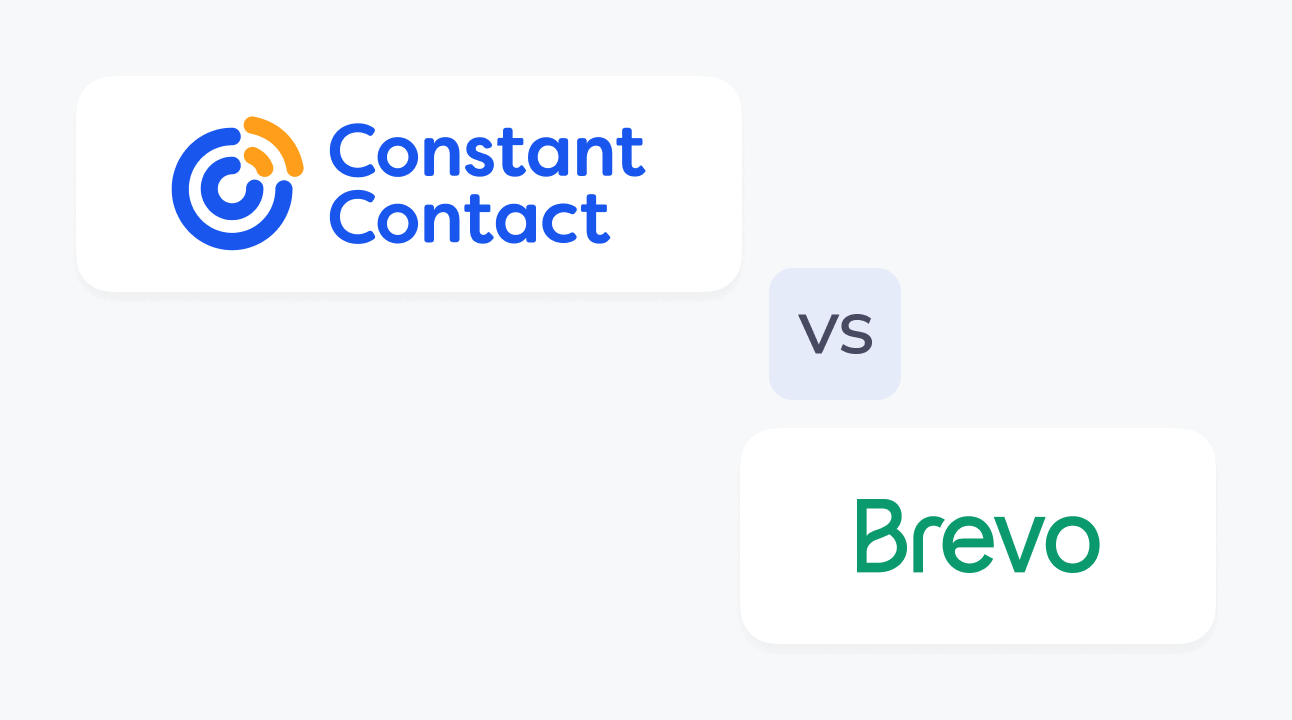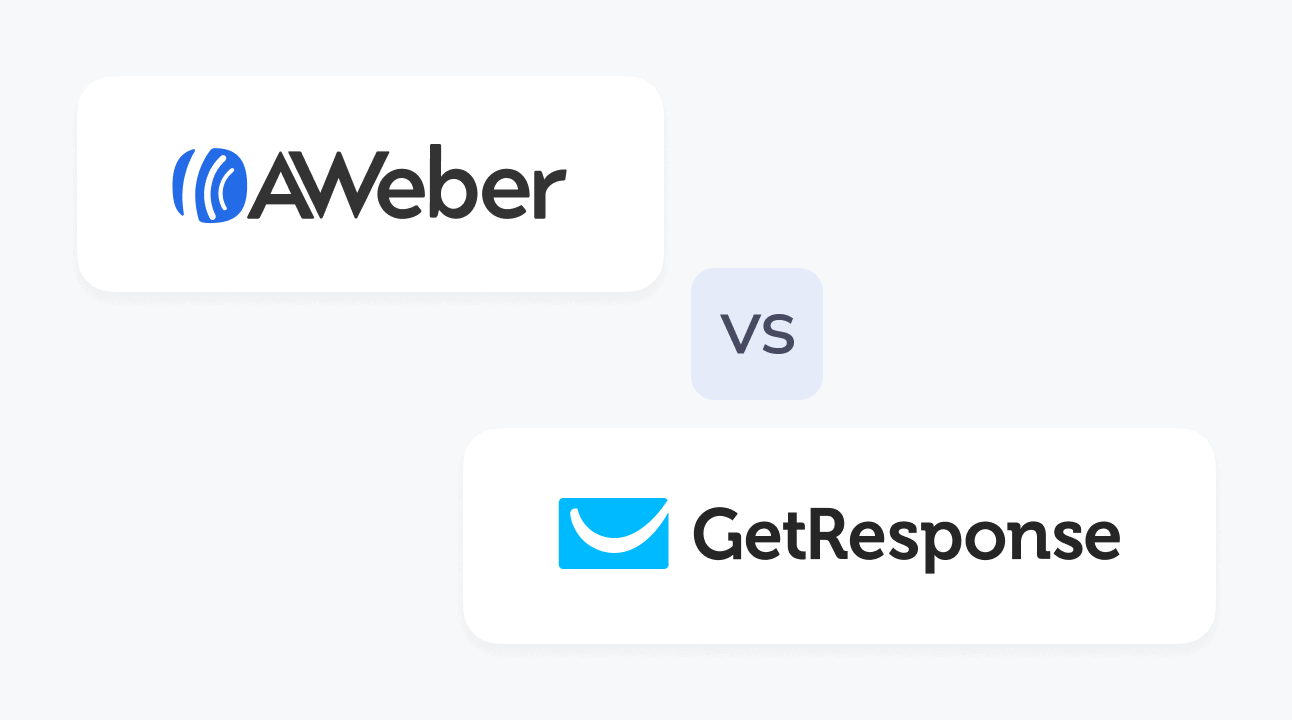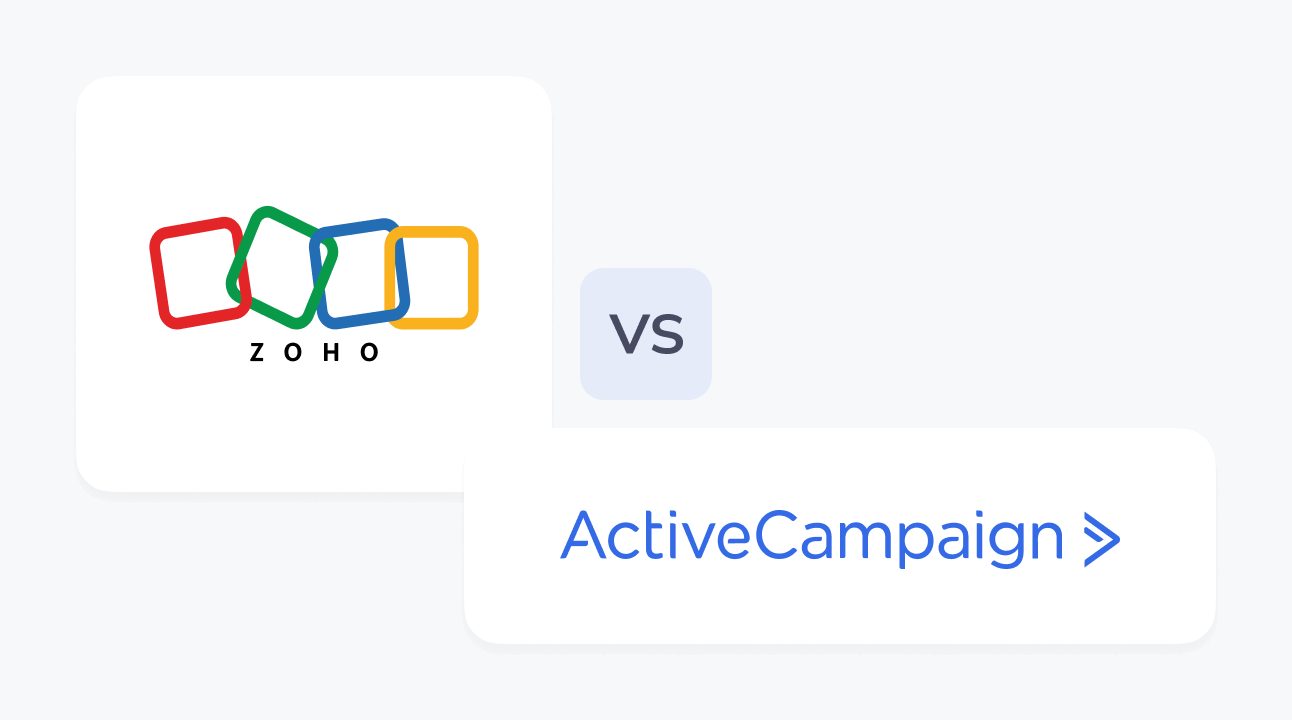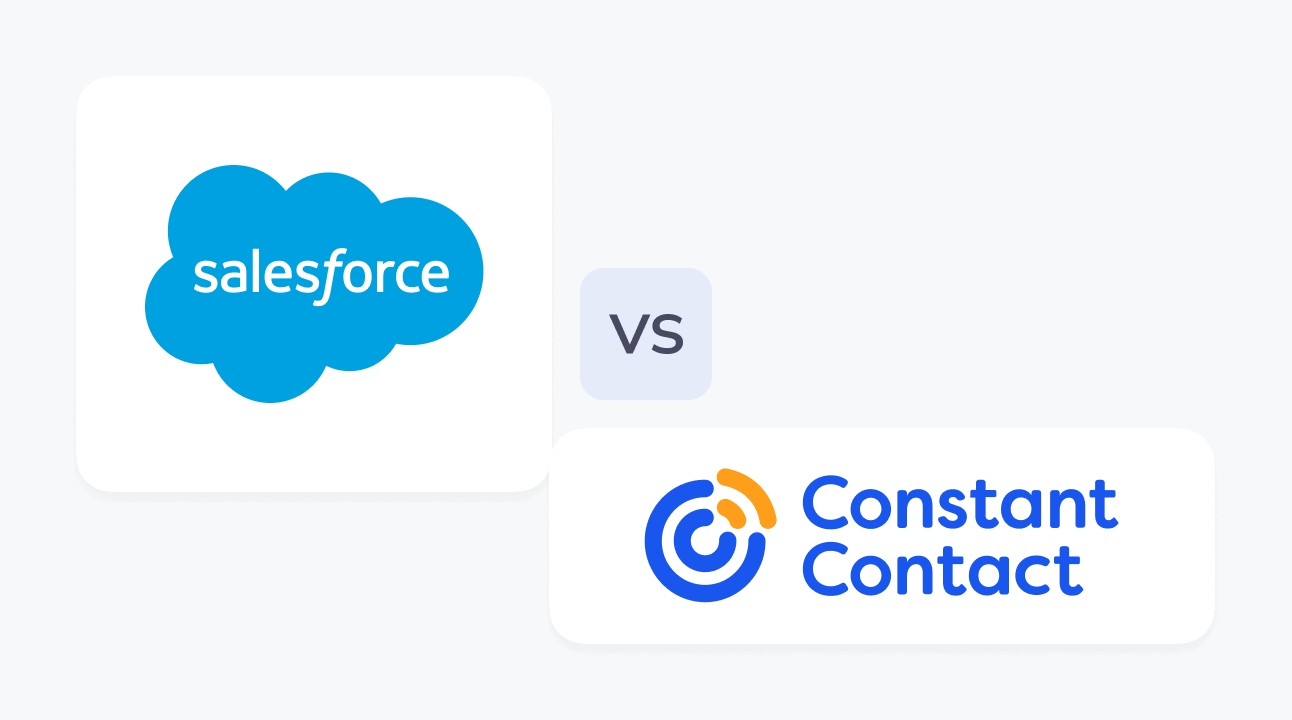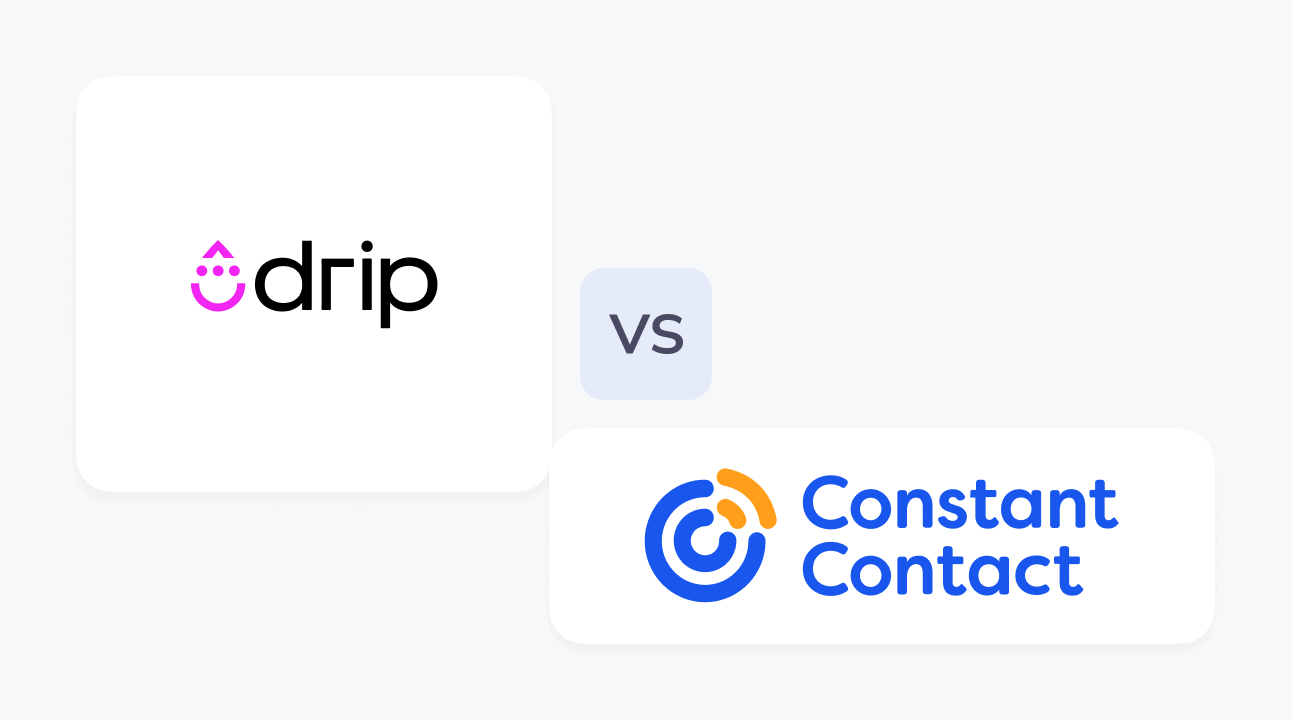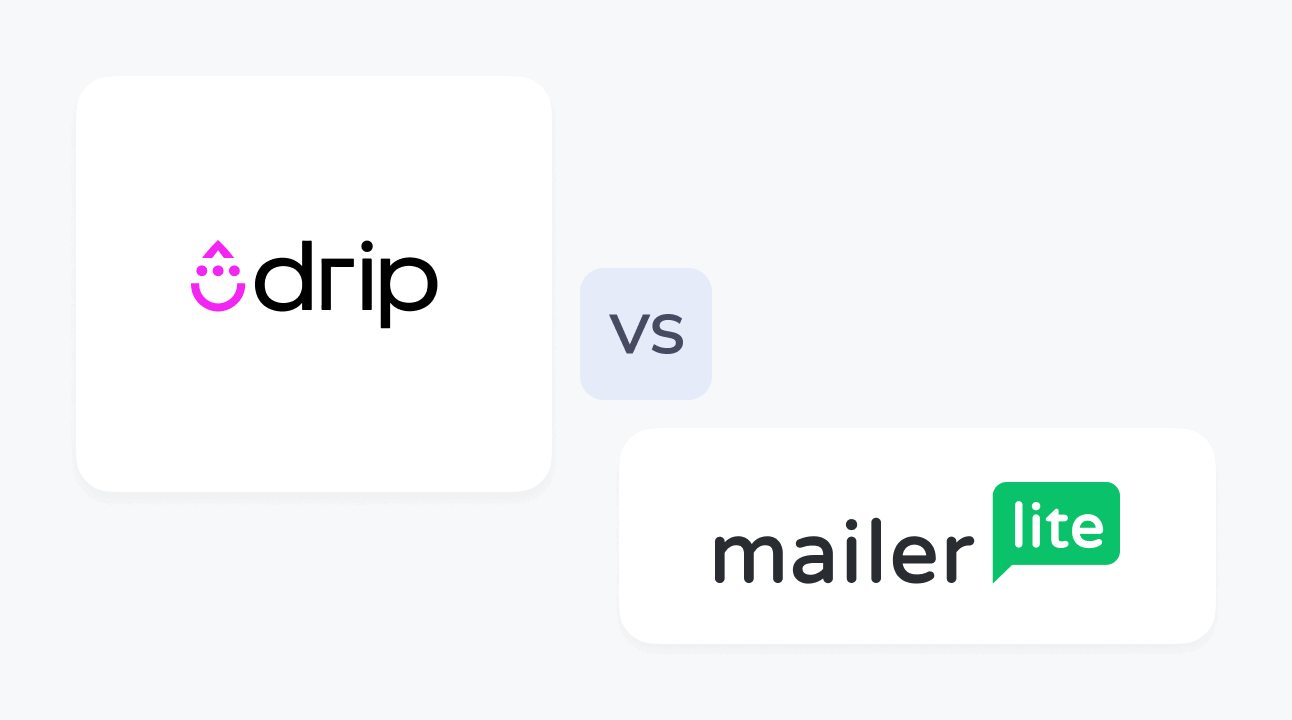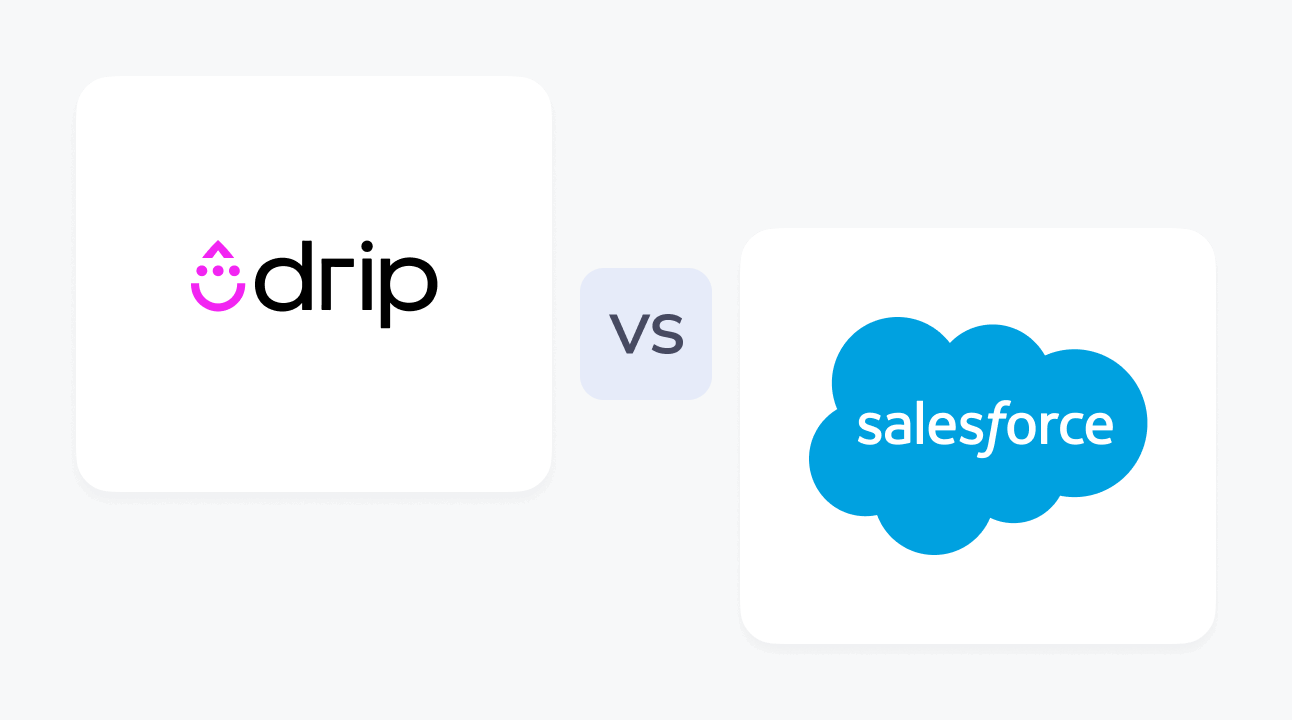
Drip vs Salesforce
Trying to choose between Drip vs Salesforce as your email marketing software? Here's when to choose each tool – and the pros and cons to know about.

Drip
- 4.4/5 on GetApp
- 4.4/5 on Capterra
- 4.4/5 on G2
Drip is a multi-channel marketing automation tool for e-commerce.
Pricing
Dynamic, depends on the contact list and email volume, starts from $39 for 1–2500 people in the list + unlimited sends
Key features
- Marketing automation
- Intuitive email builder
- Onsite campaigns
- Campaign analytics
- Smart segmentation
Support
Email and live chat, designated schedule, the availability of these channels depends on your pricing plan
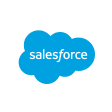
Salesforce
- 1.4/5 on TrustPilot
- 4.4/5 on Capterra
- 4.3/5 on G2
Salesforce is a powerful marketing ecosystem that includes CRM, a system for marketing personalization, sales automation, analytics, and more — and all that is AI-powered.
Pricing
Dynamic, depending on the number of users, add-on products, and more
Key features
- CRM
- Email marketing automation
- Personalization
- Segmentation
- Analytics
- A/B testing
Support
Salesforce Help, phone, online chat, separate support systems for additional products
Drip was founded in 2012 in Minneapolis, the US, and acquired by Leadpages in 2016. The company’s main goal is empowering small e-commerce businesses.
Salesforce, Inc. is a cloud-based software company that was founded in 1999 and is currently headquartered in San Francisco, California. It provides customer relationship management software and applications focused on sales, customer service, marketing automation, e-commerce, analytics, and application development.
The main focus of Drip is sales funnel automation, and the automation UI is tricky, which makes the platform less beginner-friendly than its competitors
Most users claim that it takes at least a month to learn working in Salesforce, so it’s not beginner-friendly.
Community-focused DTC and e-commerce businesses
Large or scaling businesses and sales teams
Drip doesn’t offer a free plan but there’s a 14-day free trial with no credit card required for registration.
No free plan, 30-day free trial that includes:
- Preloaded data for learning
- Pre-configured processes, reports, and dashboards
- Online training and live onboarding webinars
Dynamic pricing depends on list size and sending volume.
$39–89/month: up to 5,000 contacts, unlimited email sends, full functionality, free migration, email support
$99–409/month: up to 30,000 contacts, unlimited email sends, full functionality, free migration, email and chat support
$489–1899/month: up to 170,000 contacts and up to 2,040,000 email sends, full functionality, free migration, email and chat support, dedicated Customer Success manager
Custom pricing: custom number of contacts, up to 120,000,000 email sends, all the product features, support, and a dedicated manager included in the previous tier
Salesforce has a very complex pricing system that includes several products. Since we’re only talking about email marketing, here are the pricing plans for the email, mobile, and web marketing package.
Basic: $410/month with unlimited users, billed annually, includes:
- Subscriber profiles
- Drag-and-drop segmentation
- Email and mobile-optimized templates
- Content management and workflows
- A/B testing
- Personalisation tools
- Preference center
- Integration with Salesforce Sales Cloud and Service Cloud
- Reports and dashboards
Pro: $1282/month with unlimited users, billed annually, includes:
- Personalisation Builder
- Automation Studio
- Triggered Communications
- Automated workflow and campaigns
- Web and mobile analytics
Corporate: $3844/month with unlimited users, billed annually, includes:
- Journey Builder
- Mobile SMS and MobilePush
- Multi-channel predictive content
- Advanced reporting
Entreprise: pricing depends on contact and message volume, unlimited users, includes:
- Real-time big data segmentation
- Distributed sending
- Shared content, subscribers, and data
- Locked templates
- Custom roles and permissions
- Business Units
Email support:
- Available for all paying customers
- 9 am to 5 pm CT, Monday through Friday
Live chat support:
- Available for Drip customers on the $99/mo + plans
- 9 am to 5 pm CT, Monday through Friday
All customers regardless of a pricing plan can create a case in Salesforce Help using their Salesforce or Trailblazer accounts. Phone support in English is available 24/7 but support in other languages has limited availability for some regions:
- French Support (Canada) — Monday–Friday, 3:00 AM–11:30 AM EST
- Spanish and Portuguese Support for Latin American countries — Monday–Friday, 8AM–8PM EST
- French, German, Italian, Dutch, Spanish and Portuguese Support for European countries — Monday–Friday, 8AM–4:30PM GMT
- Mandarin and Korean Support for Asian countries — Monday–Friday, 10AM 7PM AEST
In addition to that, Salesforce also provides an extensive knowledge base, a YouTube channel with longform video tutorials, and communities for admins and developers.
- Point-and-click email editor
- Dynamic content in emails
- A/B testing
- Email automation
- Free migration service
- List segmentation and contact tagging
- Pop-ups and signup forms
- Email analytics including conversion rates and revenue
- SMS marketing
- CRM
- Email marketing automation
- AI-powered list segmentation
- A/B testing
- No-code email template builder
- Analytics in customizable dashboards
- Google Analytics integration
- Integration with third-party data sources for relevant embedded ads
- 51 ecommerce email templates for holidays, promotion, and other occasions
- 4 empty templates with different amount of columns
- 1 plain text email template
- Pre-made templates are empty but offer different layout options.
- Salesforce includes three types of templates: Classic (basically plain text with little customization options), Lightning Experience (allow for images, links, rich text, etc.), and built-in Email Template Builder (your regular marketing email editor).
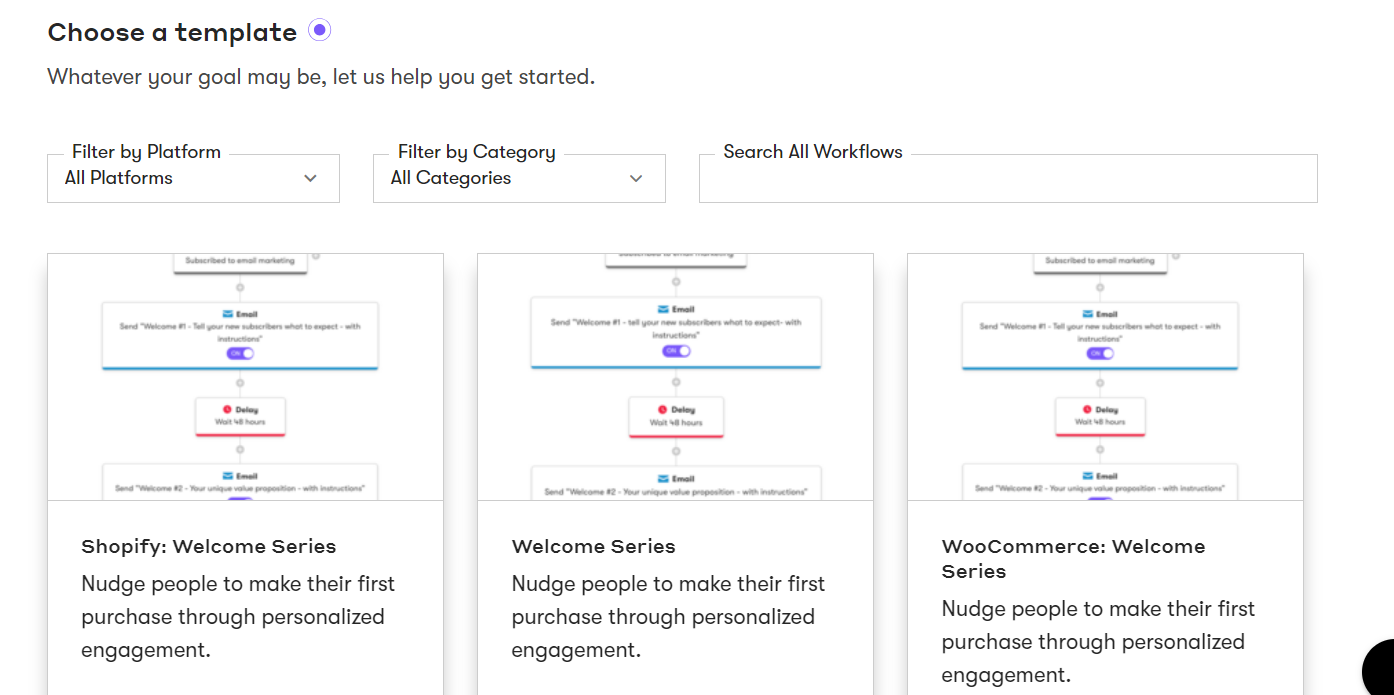
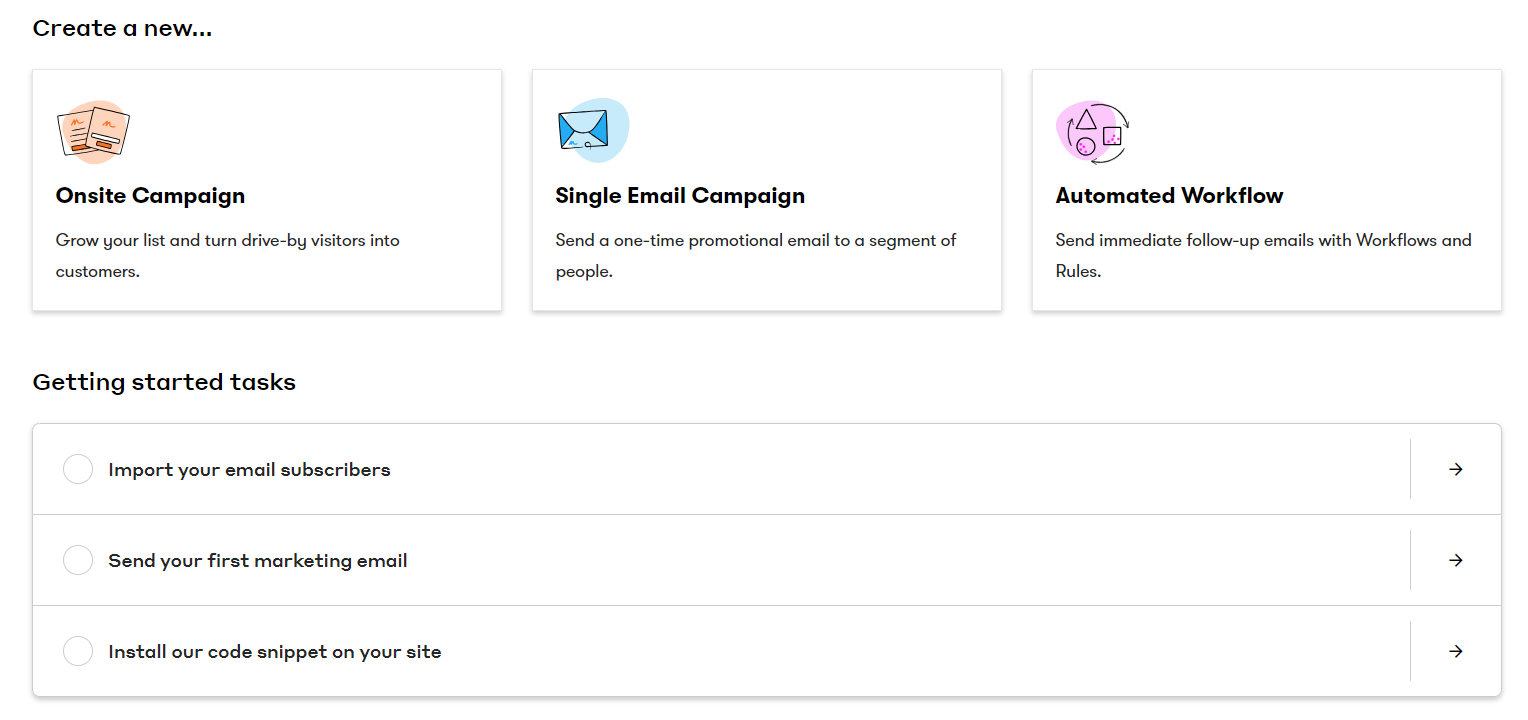

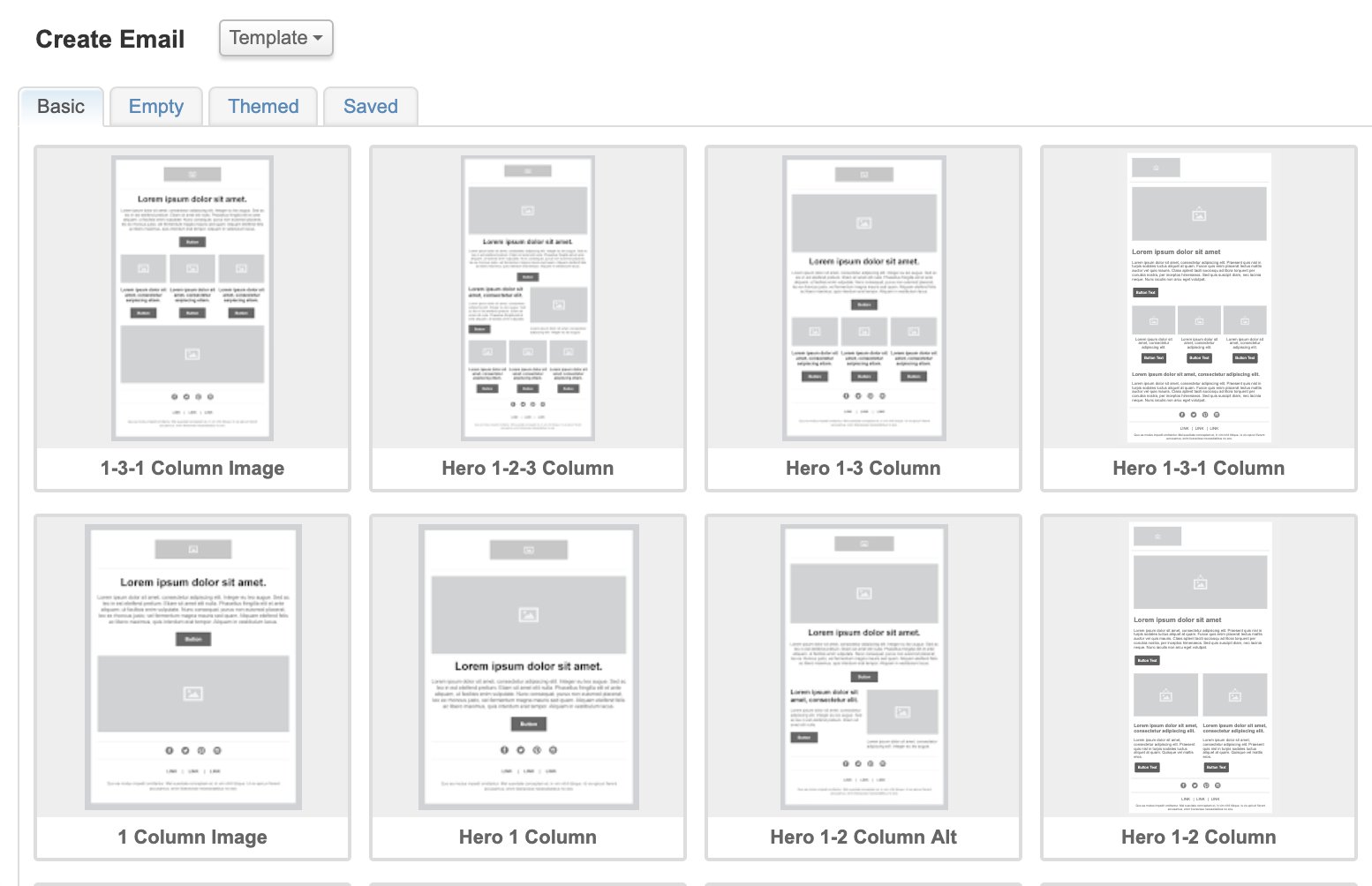
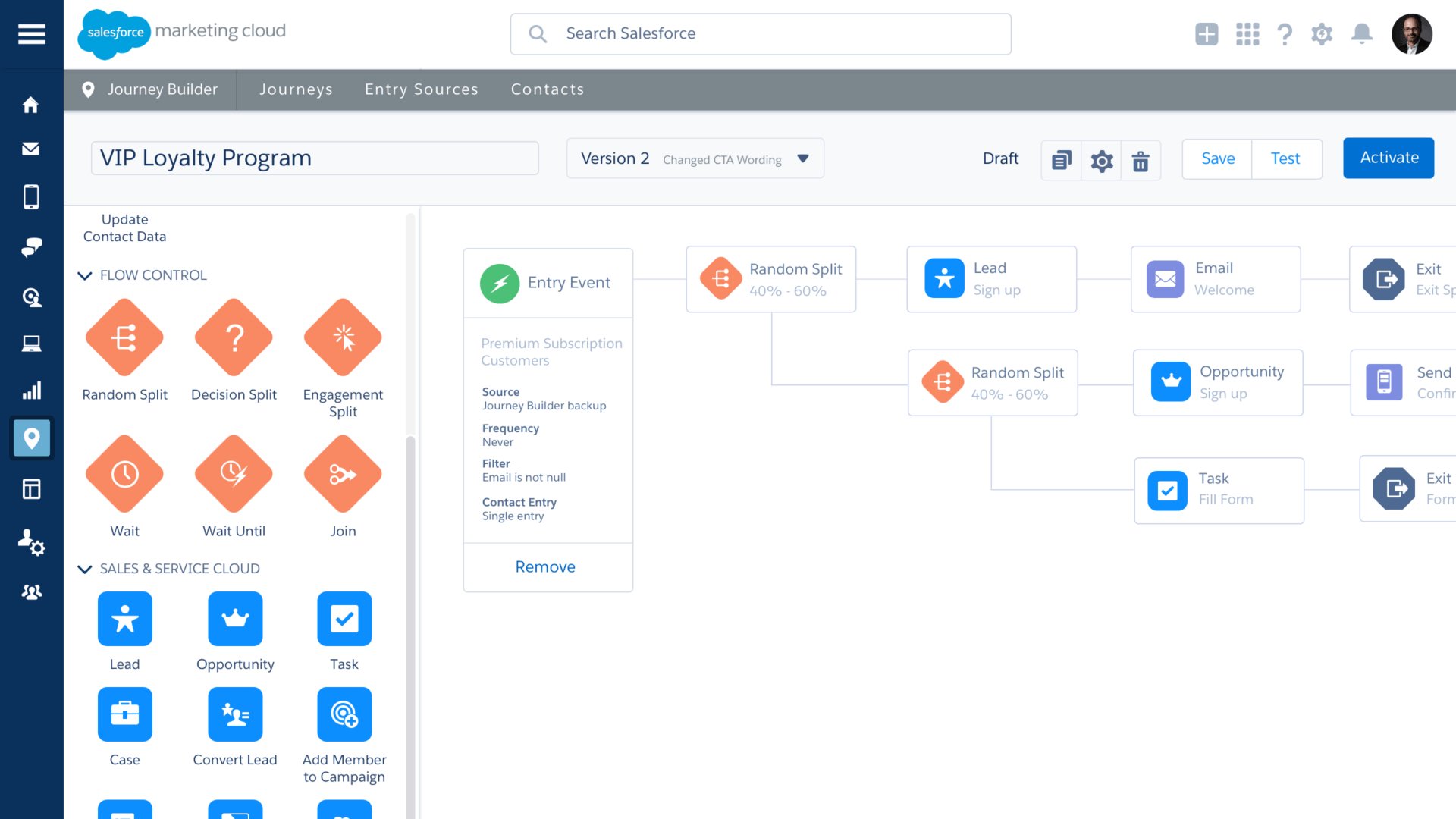
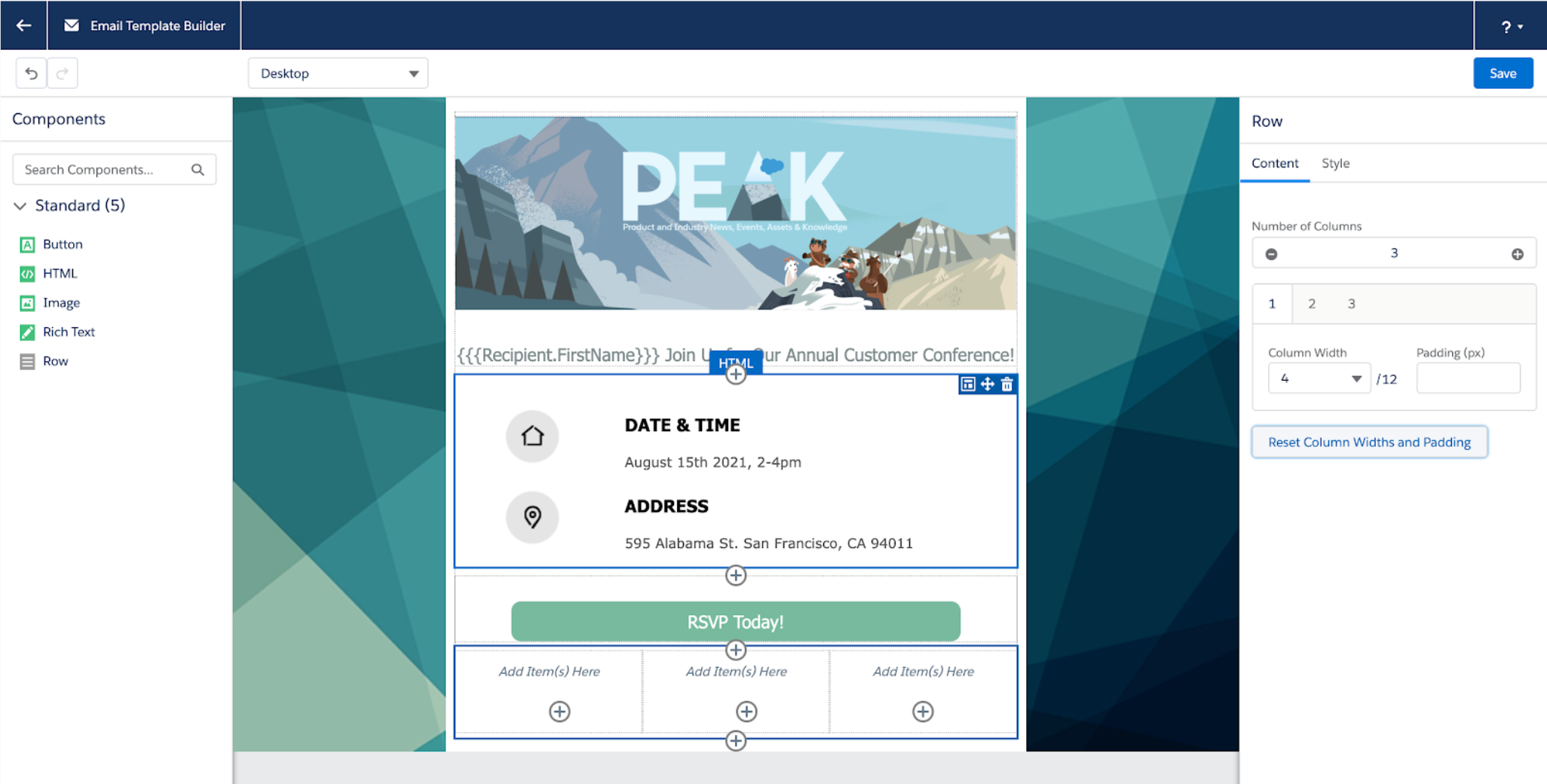
150+ integrations with e-commerce platforms like Shopify, CRMs like Zoho CRM, other ESPs like MailerLite, numerous event management tools, sales software including TikTok Lead Generation, social media, SMS marketing tools, and more
4000+ integrations and apps like other CRM systems, other ESPs (for example, Mailchimp), Slack, Tableau, Zoom, and more. Some of these integrations are free, others are paid for separately or only available for certain pricing plans.
- Web app only but it’s optimized for mobile browsers
- Web app
- Desktop app
- Mobile apps for iOS and Android
English
Chinese (Simplified)
Chinese (Traditional)
Danish
Dutch
Finnish
English
German
Italian
Portuguese (Brazil)
Russian
Spanish
Spanish (Mexico)
Swedish
Thai
39 automation templates from welcome to post-purchase designed for different e-commerce platforms: Shopify, WooCommerce, Magento, and BigCommerce. Drip also allows you to use the API of your custom e-commerce website built from scratch. The “Rules” feature allows users to create custom automation sequences with custom event triggers.
Salesforce offers Automation Studio for automating email journeys which allows users to create complex email sequences with many conditions.
- Good tools for list management and targeted campaigns
- All the metrics in one place
- Designed with e-commerce in mind
- Powerful automation
- Great support on onboarding from the vendor
- Sophisticated customer journeys
- Dynamic content in emails
- Integrations with CRMs
- Complex learning curve for new users
- Expensive compared to other ESPs
- No drag-and-drop automation workflow builder
- Slightly convoluted for one-off or otherwise not behavior-based campaigns
- Steep learning curve
- Very convoluted pricing system that caused most of the negative reviews on TrustPilot
- Hard to implement and maintain, requires a Salesforce administrator to help
- Very expensive and includes arising additional costs
They are constantly improving their tools. It never feels stagnant or lacking in critical features. Their prebuilt workflows make getting started very easy and you can start driving more revenue almost immediately.
Actually, you can set up A/B testing, but you have to hack your way with liquid language. While this is no problem for really advanced users, 90% of the users won’t know how to do this.
I personally prefer to build everything that is automation related inside workflows. Even with simple sequence emails I can do in campaigns, I prefer to do them in workflows. It just depends on how advanced you want to get with automation.
If you want simple email series, without any branching logic (like if the user does this, send this), use campaigns. If you want to go more advanced than this, use workflows.
But Salesforce Marketing Cloud is a great solution if you consider the platform. You can easily use your CRM data, you have powerful Artificial Intelligence features with Einstein and one of the most powerful Customer journey orchestrators with Journey Builder.
<...>
As for me, Salesforce meets the needs of both SMB and enterprise companies, but be careful with budgets: of course when customization needs are rising, you have to pay for that. But exactly the CRM gives you that opportunity.
*This information is current as of 01/20/2025. While we regularly update our articles, it`s possible that this article may not contain some of the latest information.
